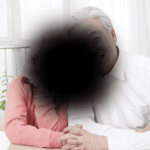Anak-anak biasanya mengalami rabun jauh sejak lahir dan masa kanak-kanak karena mata mereka lebih kecil. Seiring bertambahnya usia anak-anak, bola mata mereka akan memanjang dan fokus optik bergeser dari belakang retina ke retina. Dalam beberapa kasus, anak-anak dapat berubah dari hiperopia menjadi miopia.
Hiperopia derajat ringan mungkin tidak menunjukkan gejala penglihatan kabur karena anak-anak memiliki kemampuan fokus yang kuat, yang dikenal sebagai akomodasi, untuk memfokuskan cetakan atau objek jarak dekat. Anak-anak dengan hiperopia rendah atau sedang cenderung mampu mengimbangi rabun jauh dengan akomodasi yang baik, sehingga tidak mengalami keburaman atau kesulitan membaca. Sebagai perbandingan, hiperopia derajat tinggi dapat menimbulkan gejala.
Hiperopia didiagnosis melalui pemeriksaan mata menyeluruh. Namun, ada tanda dan gejala umum yang perlu diwaspadai. Berikut ini adalah beberapa di antaranya:
- Tidak mencapai potensi mereka di sekolah atau enggan membaca dan belajar
- Kesulitan perhatian
- Sering sakit kepala atau kelelahan setelah melakukan aktivitas jarak dekat seperti membaca, menulis, atau menggunakan komputer.
- Mata menyipit atau menoleh ke dalam
- Mata tegang atau lelah
- Gambar/penglihatan kabur saat dekat tetapi jelas saat jauh
Pemeriksaan Mata Dilatasi untuk Anak-anak
Refraksi sikloplegik adalah prosedur yang sering dilakukan pada anak-anak yang menggunakan obat tetes mata untuk merelaksasikan otot-otot iris mata. Obat tetes mata sikloplegik akan melebarkan pupil untuk mencegah pemfokusan berlebihan selama pemeriksaan mata. Ini adalah langkah diagnostik yang penting, untuk memperoleh hasil yang akurat dalam refraksi anak. Ini juga dapat mengidentifikasi tanda-tanda awal kondisi mata yang serius seperti mata malas atau ketidaksejajaran mata.
Perlakuan
Sebagian besar anak dengan hiperopia derajat ringan hingga sedang tidak memerlukan perawatan. Pada hiperopia derajat tinggi, anak-anak dirawat dengan kacamata. Orang tua disarankan untuk berkonsultasi dengan dokter spesialis mata anak untuk diagnosis dan penanganan kondisi tersebut.






